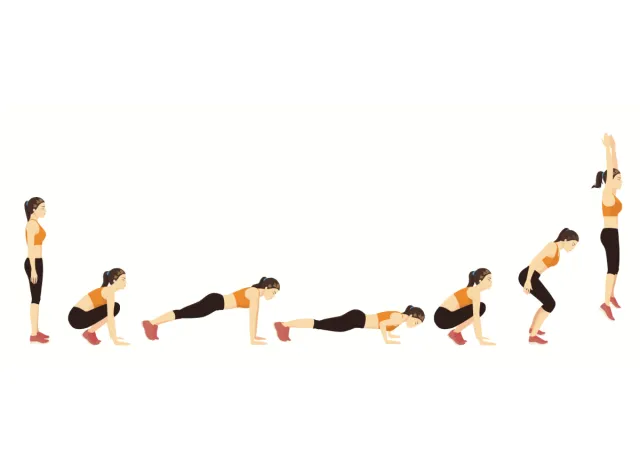Over 40? If You Can Do This Many Burpees Without Stopping, Your Fitness Is Elite Level

Staying fit after 40 feels like swimming upstream—your body just doesn’t respond the way it used to. Between slower metabolism, muscle loss, and all those aches that seem to appear out of nowhere, maintaining peak physical condition becomes increasingly challenging. But there’s one simple exercise that can reveal exactly where you stand fitness-wise, and it might surprise you how it stacks up against your peers. Read on to discover the burpee benchmark that separates the average from the elite—and learn how to achieve it yourself.
What Happens to Your Body After 40 That Makes Fitness More Challenging

After 40, your body naturally faces physiological challenges that make fitness more challenging. One of the biggest changes is the loss of muscle mass that leads to reduced strength and endurance. Your body will also experience slower metabolism due to the decrease in muscle mass, allowing your body to burn fewer calories at rest. Additional challenges include decreased bone density, reduced flexibility and joint strength, and hormonal shifts.
Why Burpees Are Such a Good Overall Fitness Test for You

Burpees make for such a good overall fitness test because they measure and challenge a wide range of critical fitness components with a single, no equipment movement. When over 40, the components are even more crucial for maintaining functional strength and mobility in daily life. A burpee will test one’s cardiovascular endurance, muscular strength and endurance, coordination and mobility, and anaerobic capacity. Testing these factors after 40 will provide an overall snapshot of functional movement while setting benchmarks against peers.
The Proper Form for Your Standard Burpee
The proper form for a standard burpee is:
- Begin by standing straight up with your feet shoulder-width apart and your arms at your side.
- Bend your knees and push your hips back as you lower into a squat.
- Keep your chest up and feet flat on the floor.
- Squat down until your hands are flat on the floor in front of your feet about shoulder-width apart.
- Jump or step back into a high-plank position as you keep your body in a straight line.
- Bend your elbows and lower your chest to the ground to perform a push-up.
- Press back up followed by jumping or stepping forward to bring your feet back to your hands.
- From the squat position, explode straight up into the air while reaching your hands straight over your head.
- Land softly and bend your knees to absorb the impact. Repeat these steps for a selected number of reps.
What Your Burpee Test Score Says About Your Fitness

Most adults over 40 can perform about 10 to 14 burpees in one minute. Here’s how your results stack up:
- Beginner: 8–10 reps
- Intermediate: 11–14 reps
- Advanced: 15–20 reps
If you can only manage 5–10 consecutive burpees, that indicates an average but solid fitness level and a strong starting point for improvement with consistent training. Hitting 20–30 burpees in a row, however, signals exceptional cardiovascular fitness, strength, and endurance—placing you in an elite category.
The Best Way to Build Up Your Burpee Endurance if You Test Poorly

The best way to build burpee endurance is to begin with low-impact modifications, build foundational strength, and increase endurance gradually. Focus on form first and foremost by breaking down the steps into slower, individualized movements. From there you can build up endurance through a lower time or rep count.
Some low-impact versions to try would be elevated burpees, step-back burpees, and push-up free burpees. These will help with reduced intensity as you work up towards higher-intensity workouts. Build foundational strength and ability by training individual components of burpees like mastering planks, bodyweight squats and jump squats, and push-ups before putting it all together. Lastly, you can implement endurance-building strategies such as interval training, focusing on pacing, and practicing consistency.
Looking for more easy ways to lose fat? Here’s How Long Your Walking Workout Should Be To Shrink Belly Fat.